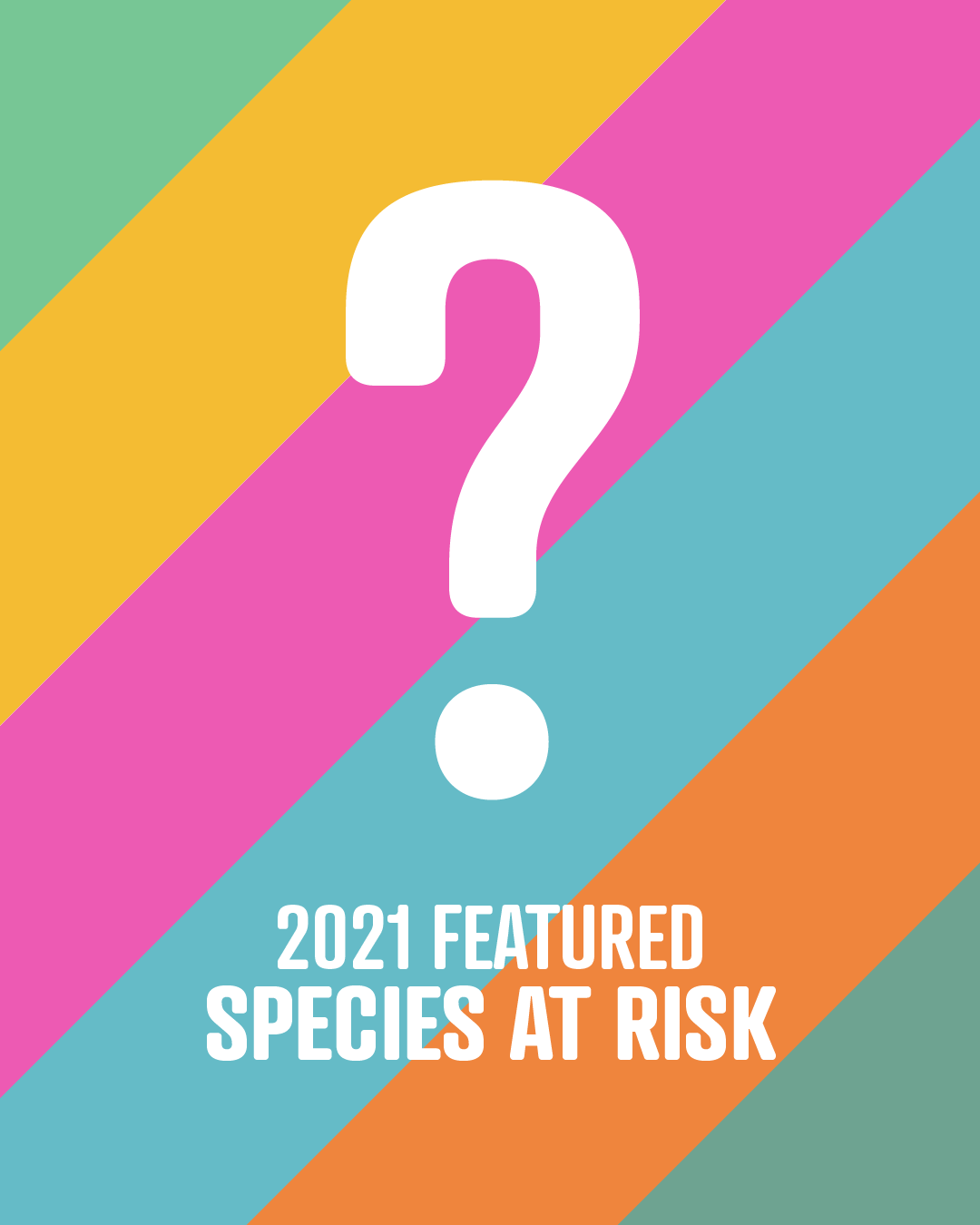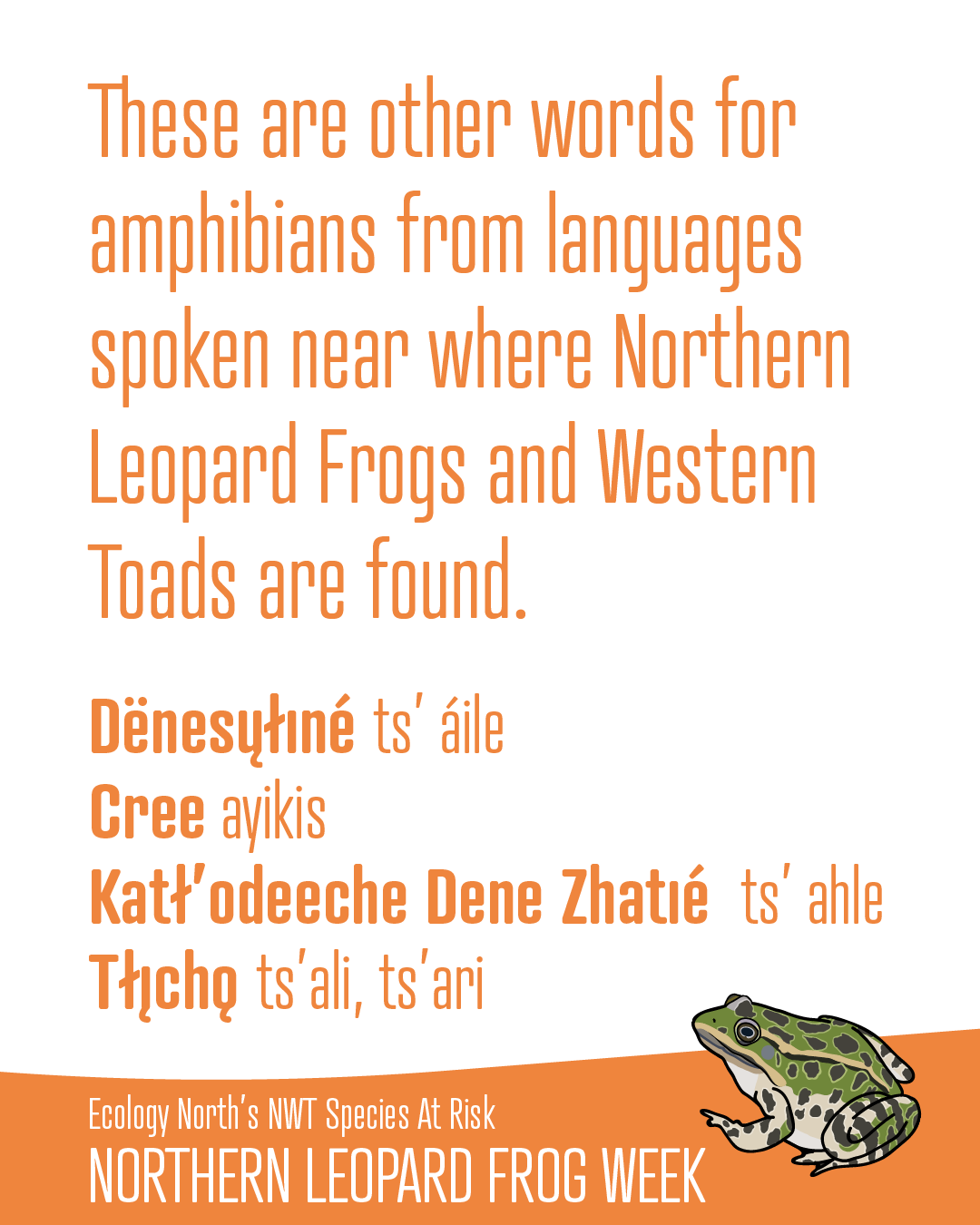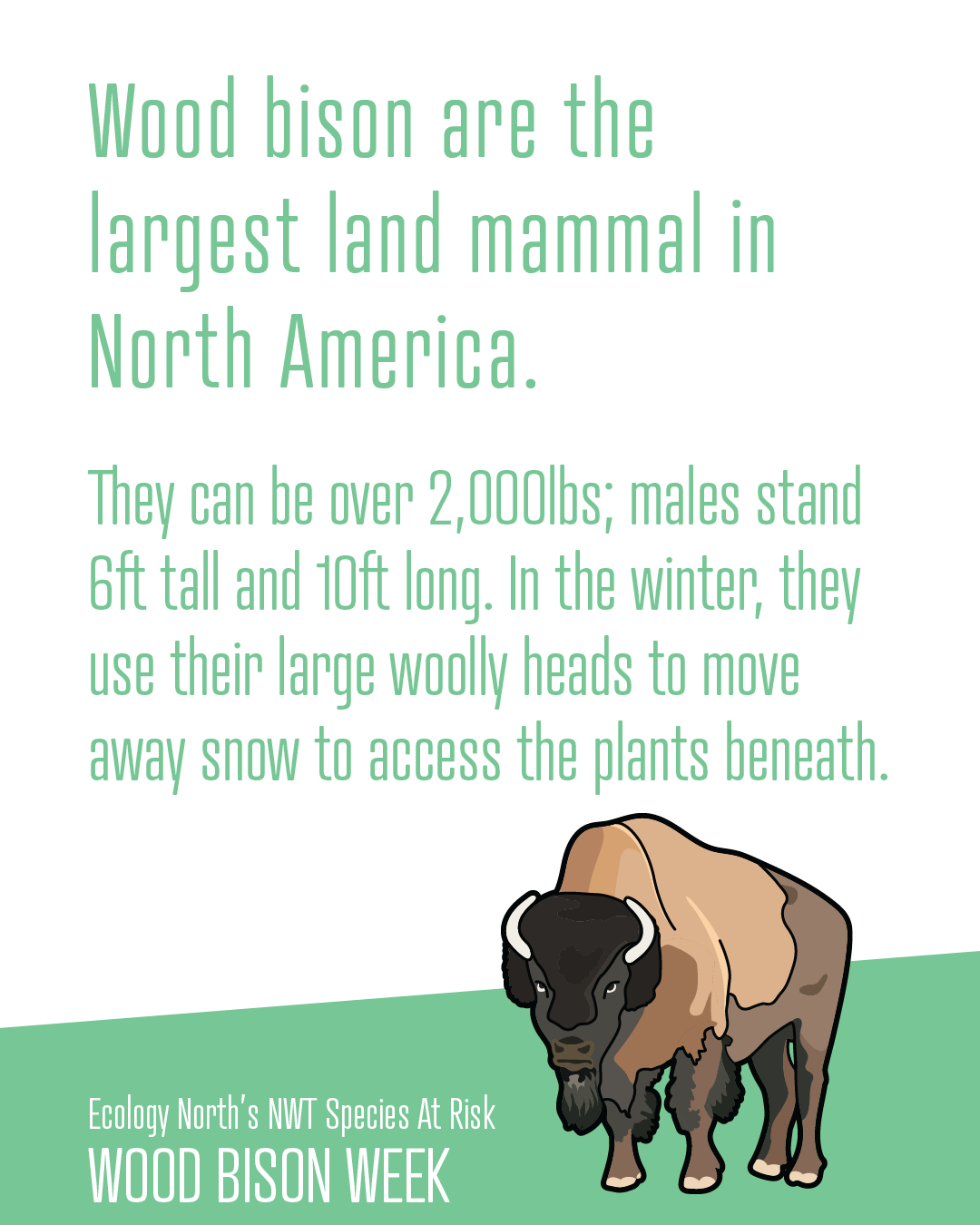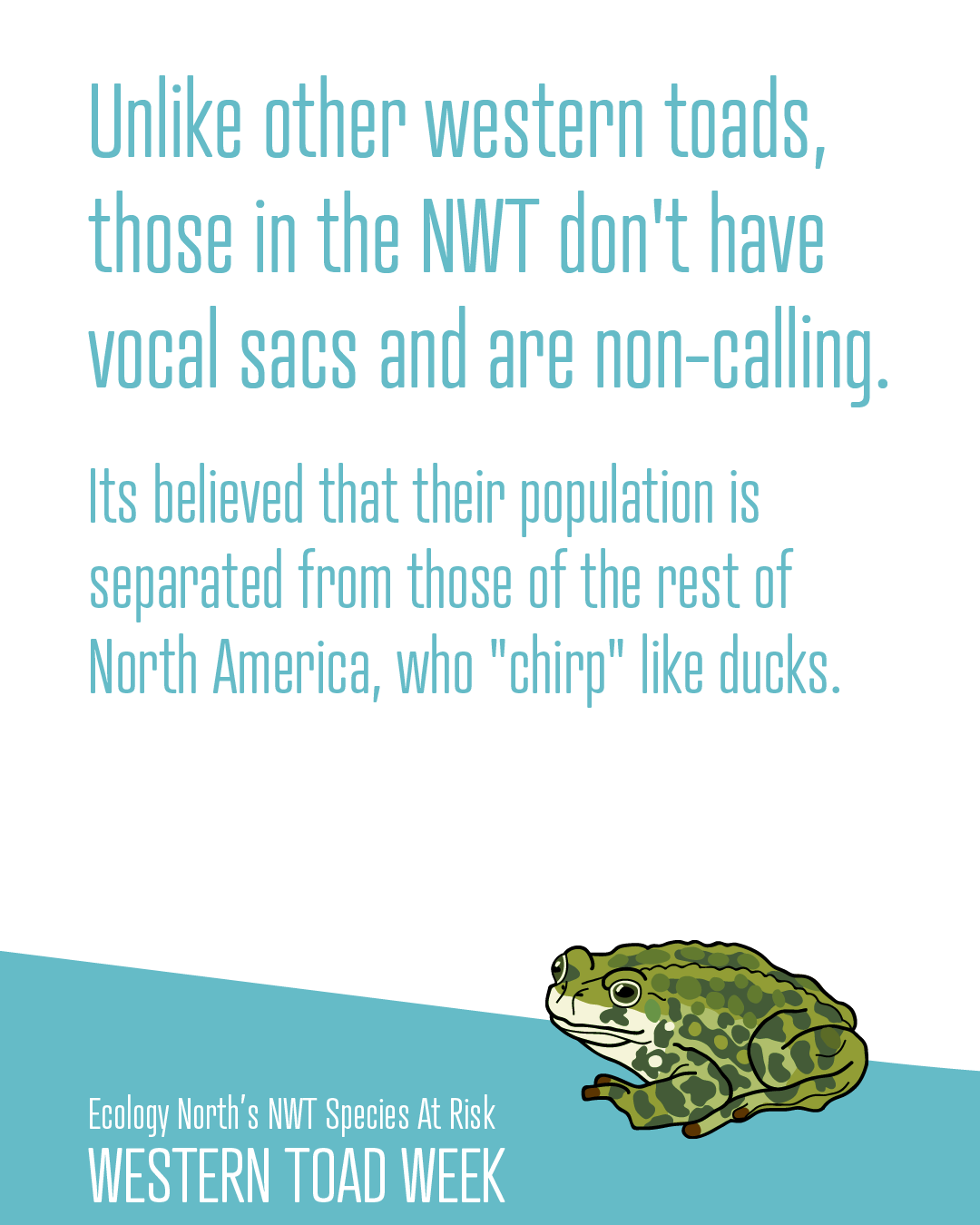Each year Ecology North receives funding from the GNWT Species at Risk program to create teacher's resources. The first year I worked on the project, the focus was on the Northern Leopard Frog and Western Toad. The following year was all about Wood Bison.
I was able to use research from GNWT studies for the information in the handouts. It was essential to include a variety of activities into the teacher's guide and brochure to get as much as possible from the single-page document. I structured the pages using grids, colour, and typography to make them clear and accessible.
"Margeaux, you are seriously the best. These look awesome!!"
-Emma Ambury, Supervisor
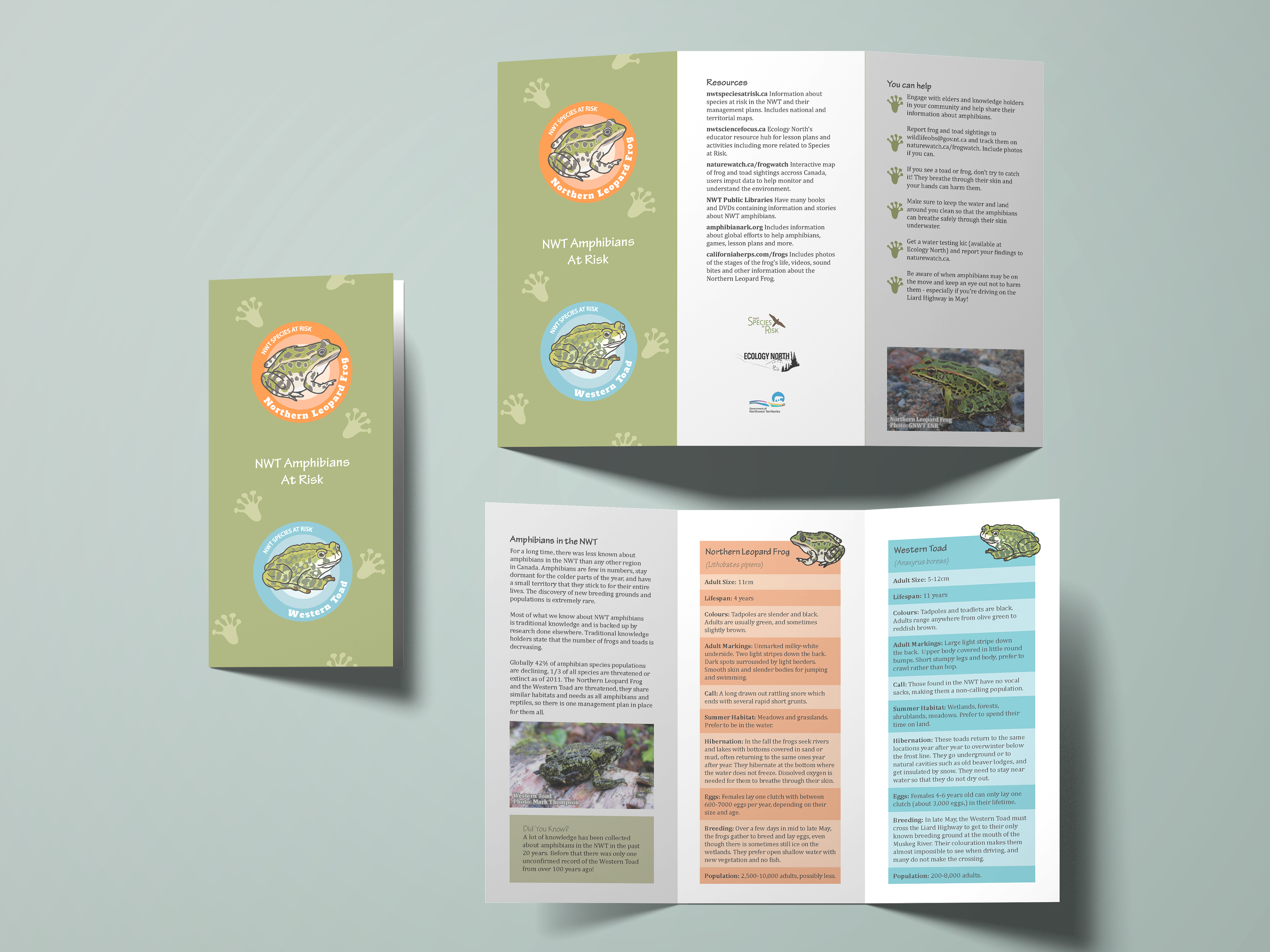
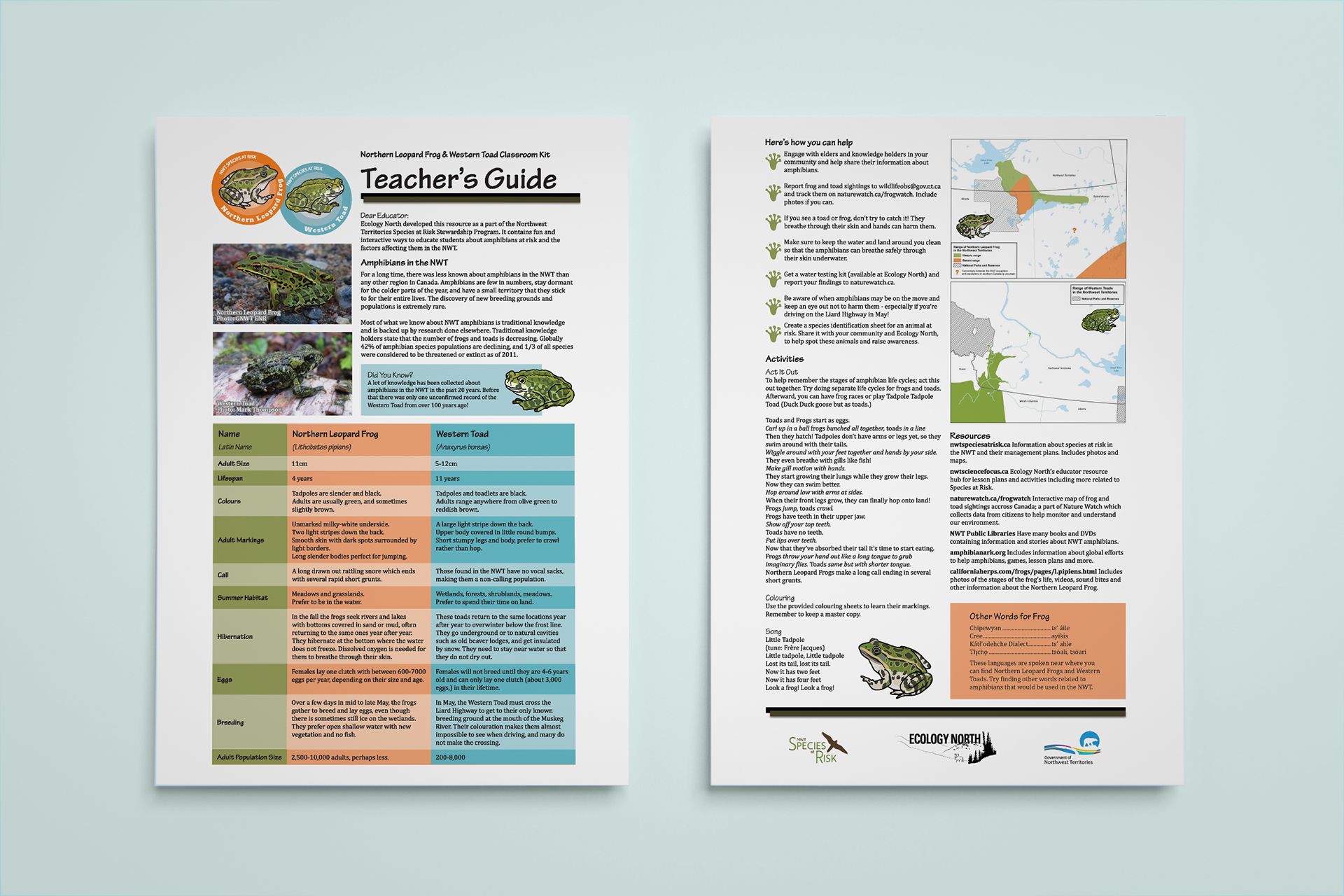
I made illustrations of the animals to use throughout the resources based on photos in the Species at Risk catalog. Coloured versions appear on the stickers and identification cards, and the colouring pages use altered outlines. The amphibians colour by numbers helped kids with recognition. I included helpful information, and a call to action for if one of these species was spotted. Hanging the artwork on the fridge could inform the rest of the family. I illustrated animal tracks for bullets to tie together the imagery.
I had the joy to visit summer day camps to teach about NWT Species at Risk. Participants tested the water of lakes and rivers to learn about the factors that make it healthy for amphibians and other creatures. We got to play lots of games, sing songs, and see the next generation get excited to learn about and protect these vulnerable species.
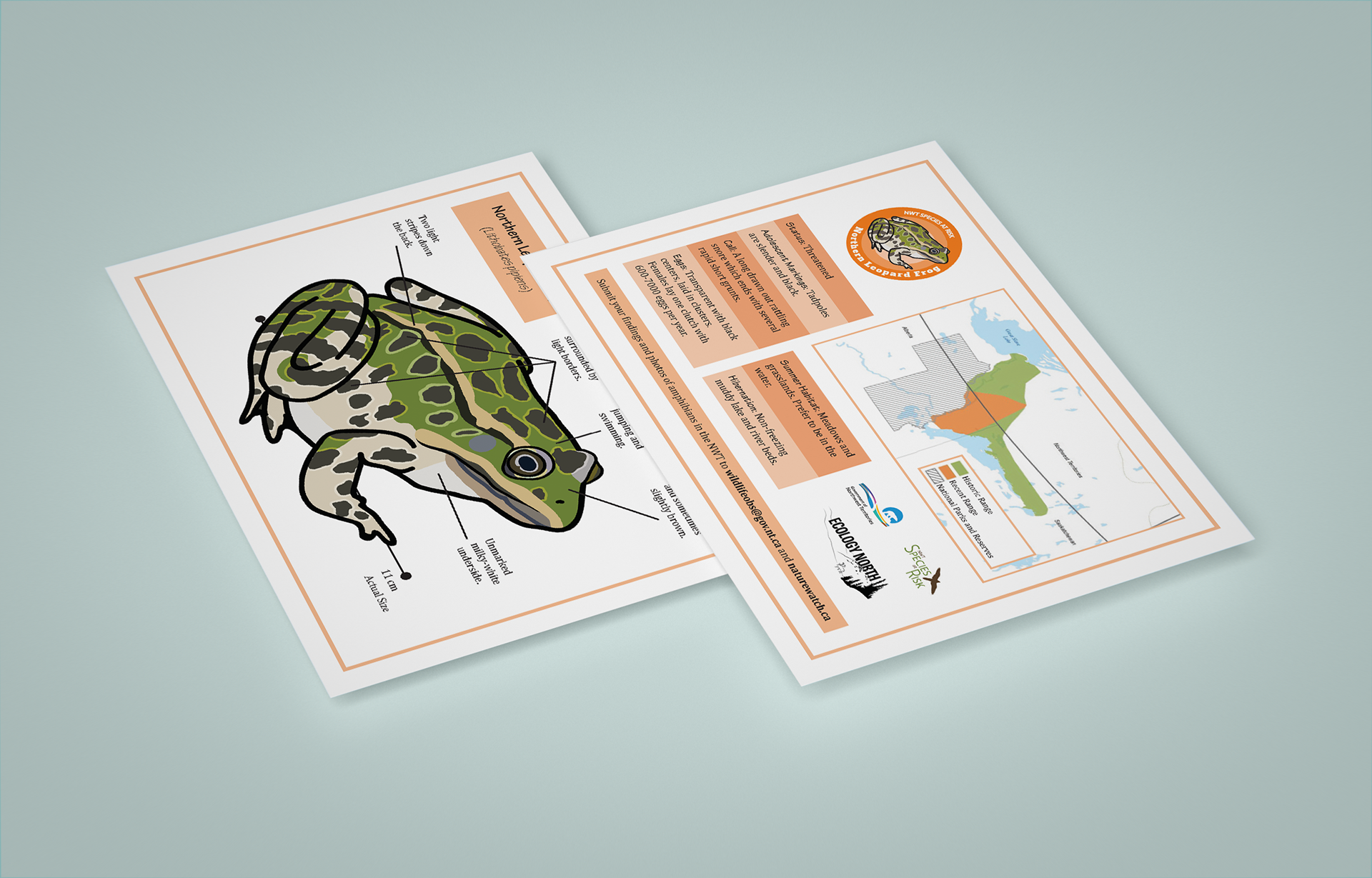
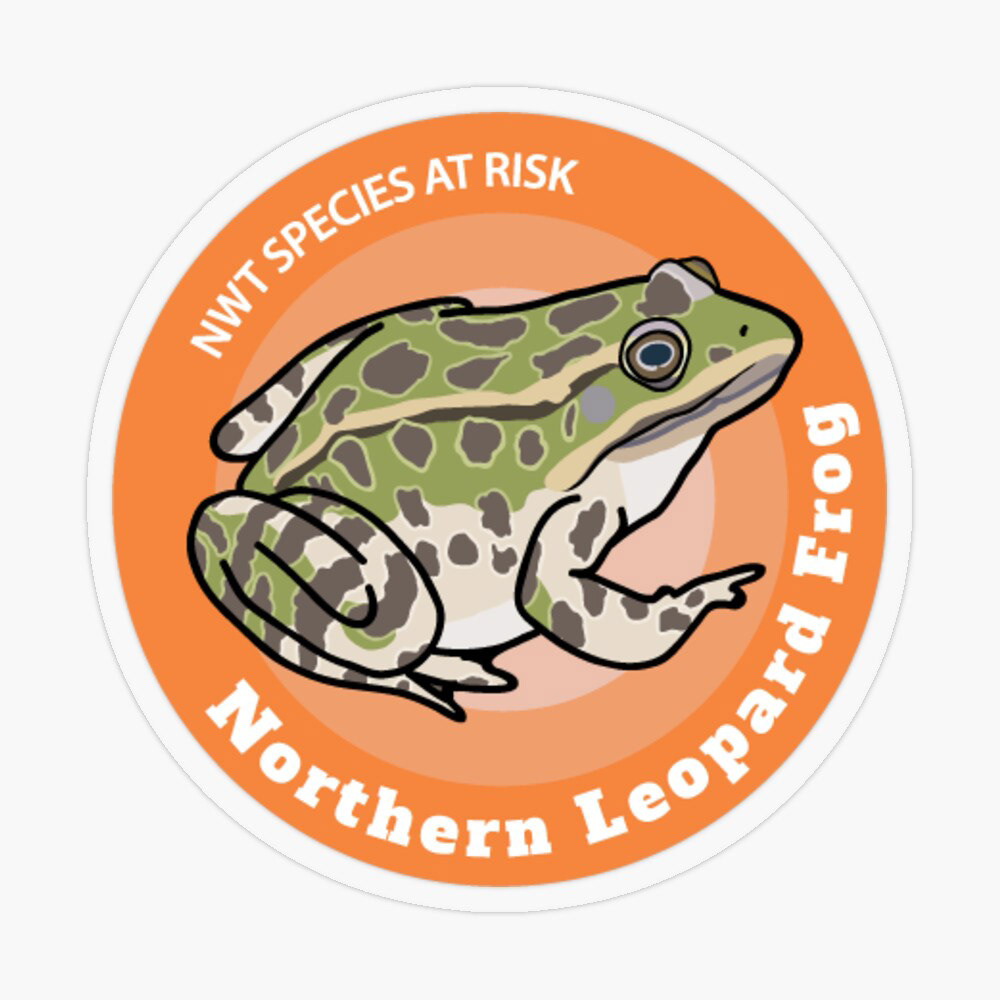
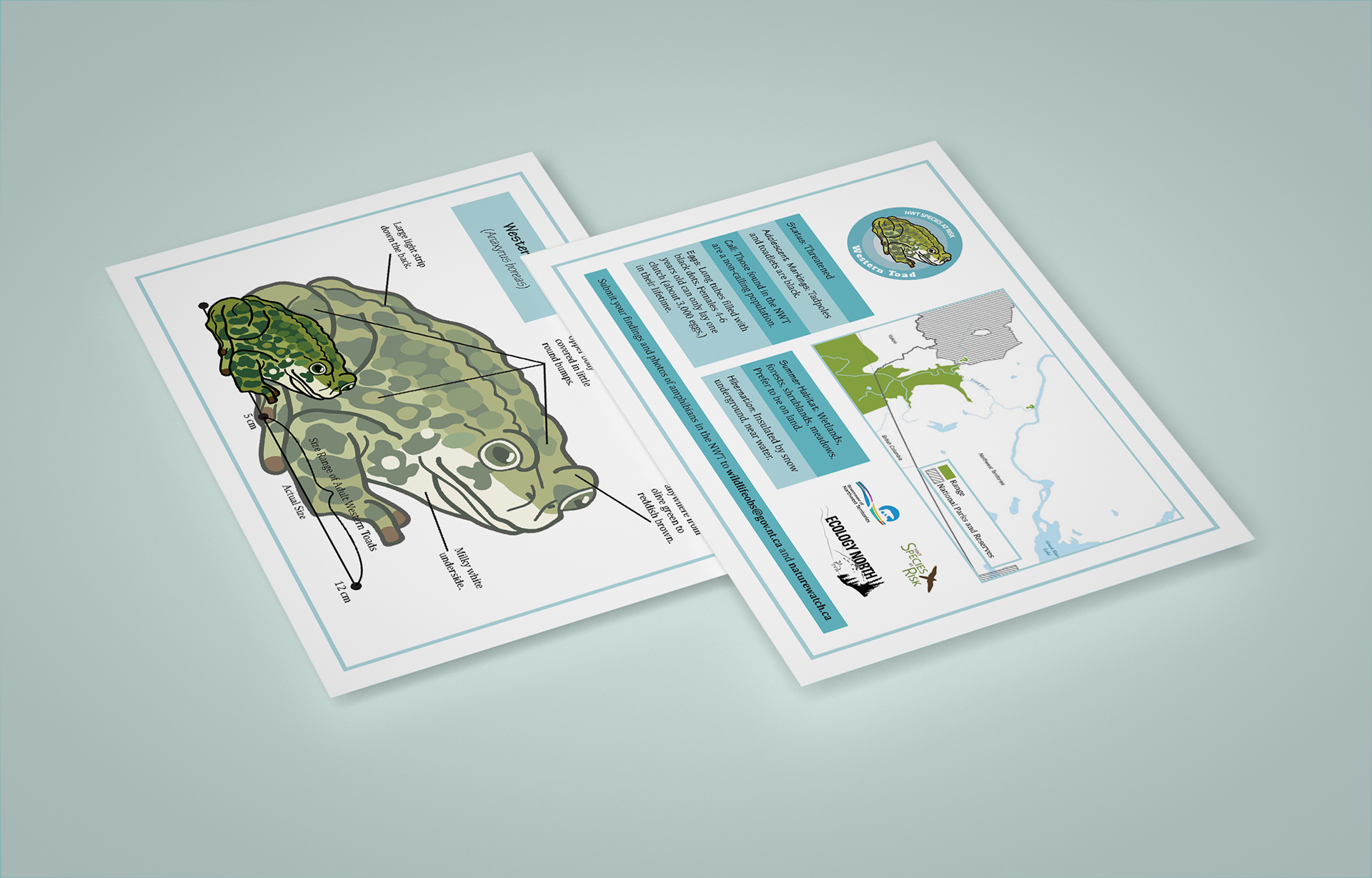
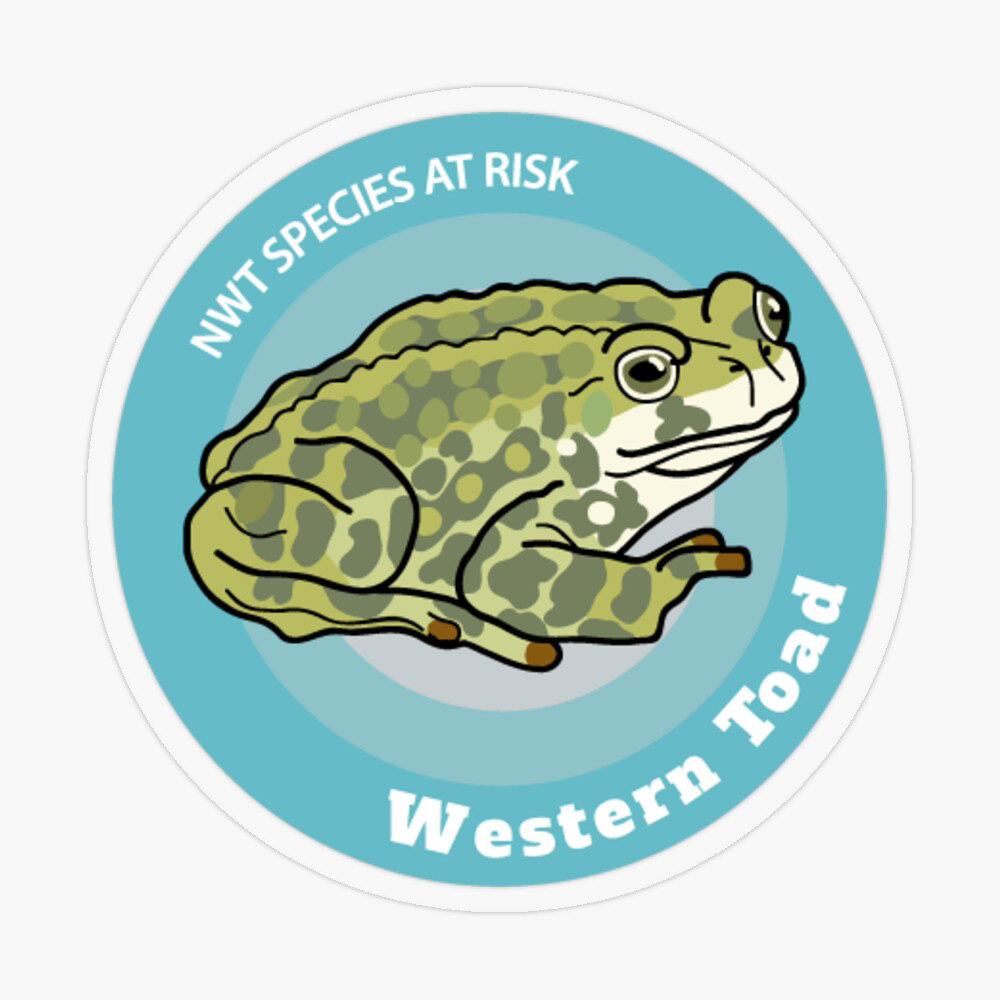
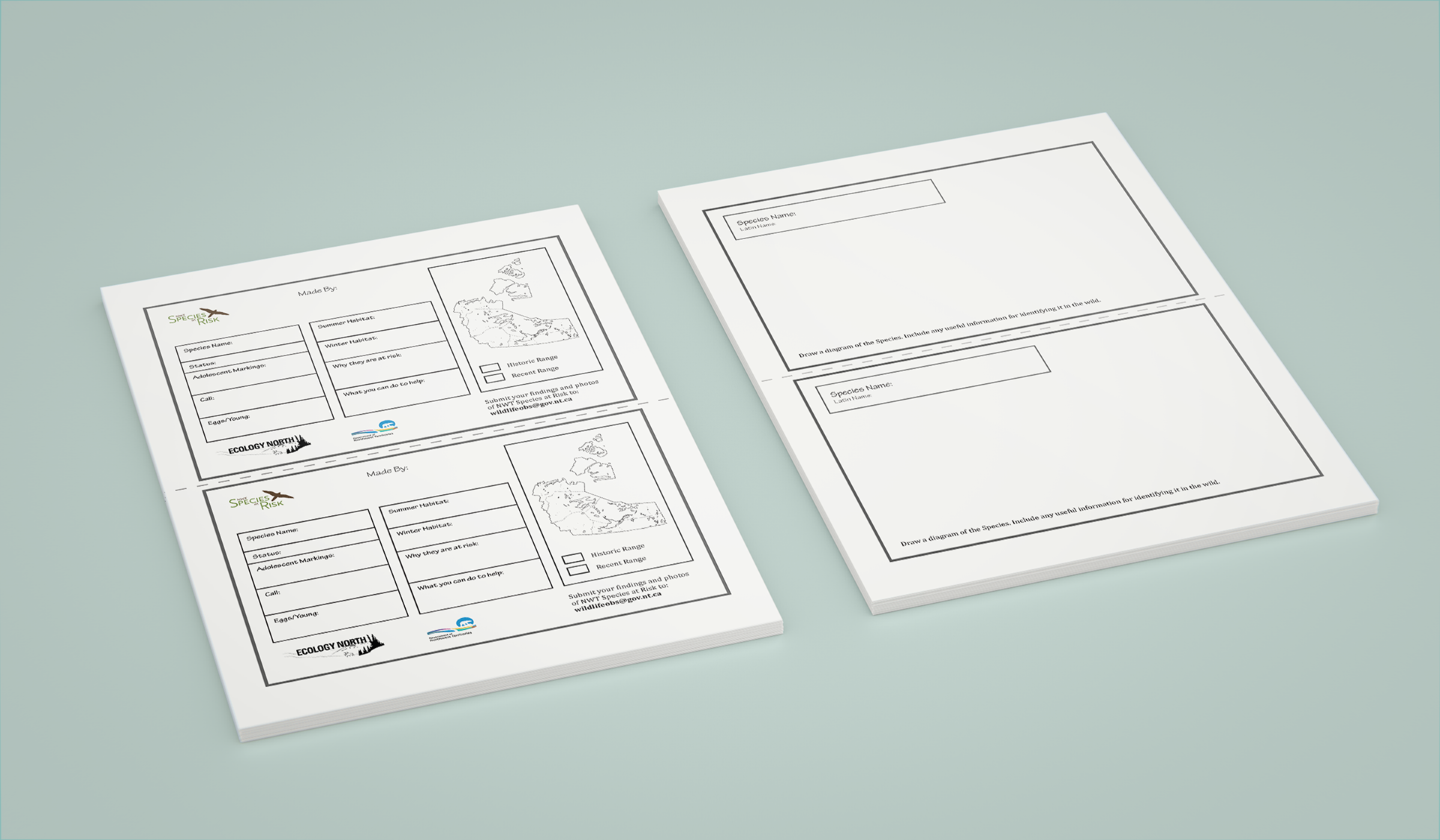

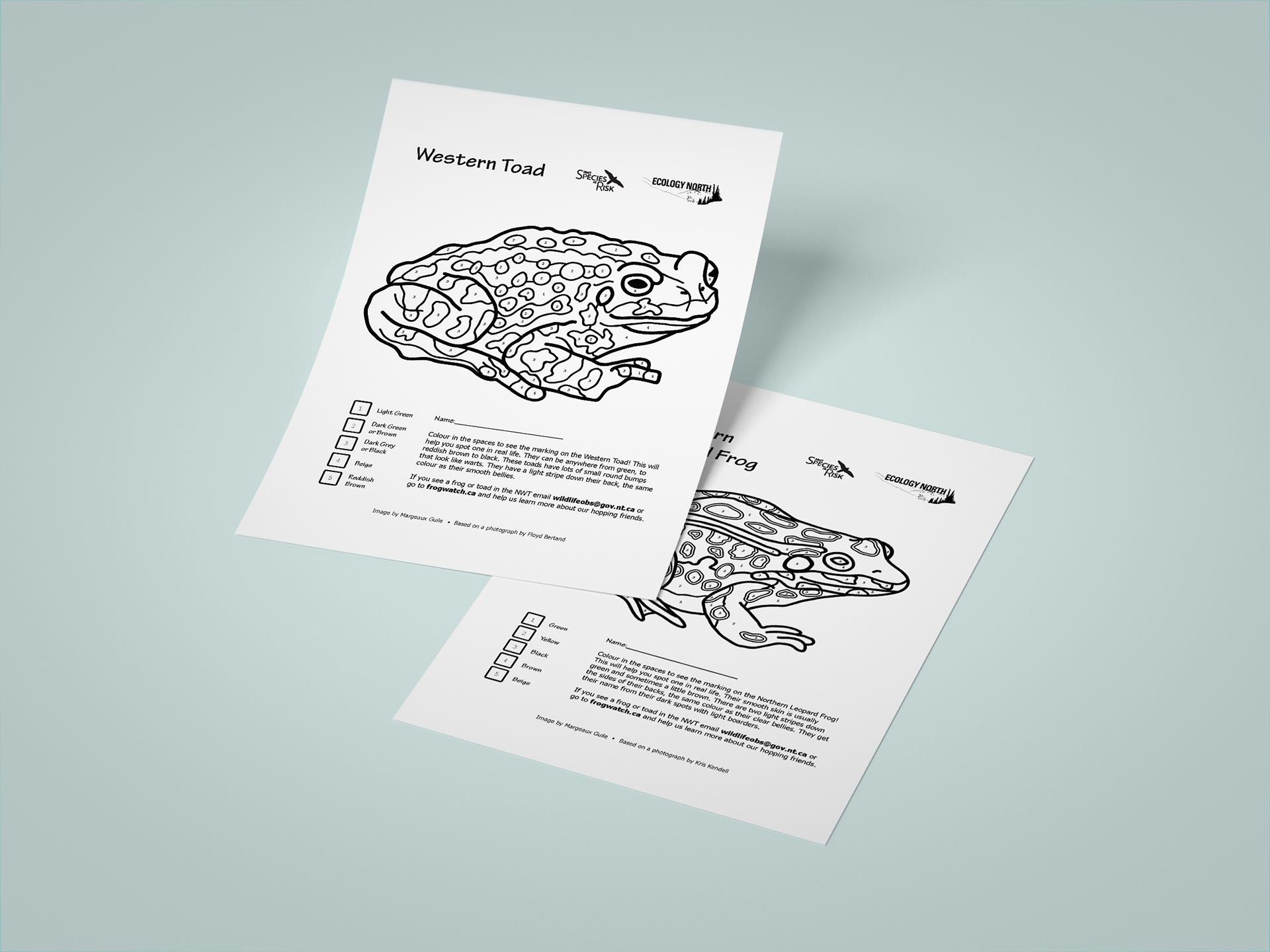
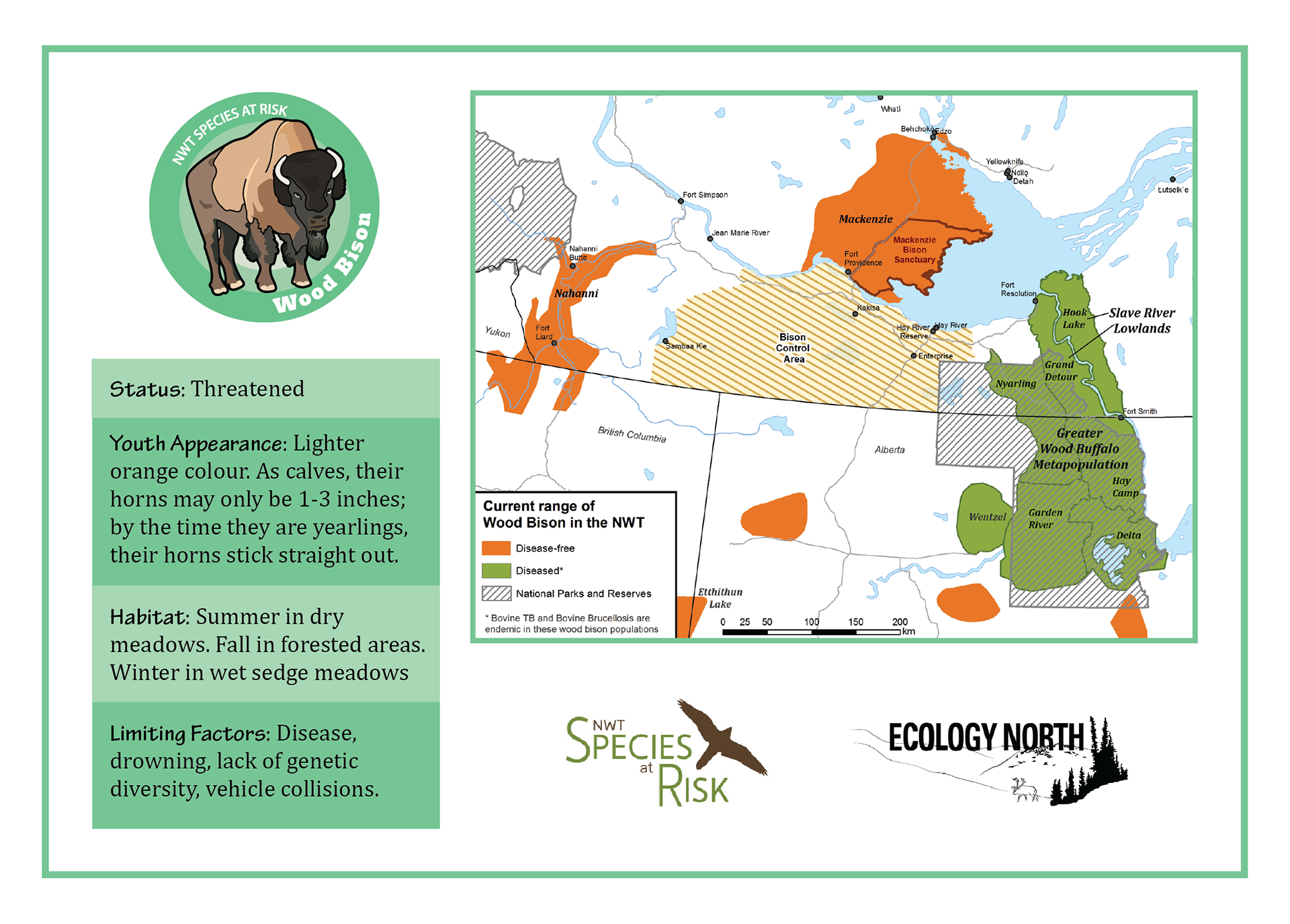
I worked on a social media campaign for our previously featured species. Each week the Ecology North social media accounts highlighted that species. I found fun and frightening facts about each one to put on the posts. The descriptions had more information, calls to action, resources, and contests.
Each species has its own colours which I used as a wave at the bottom of the posts to connect the posts on the instagram feed. I chose a typeface which is similar to the EN logo, except that it is more rounded and and friendly. It was important for any typeface chosen for EN materials to include glyphs and special characters that are used in Northern languages.
